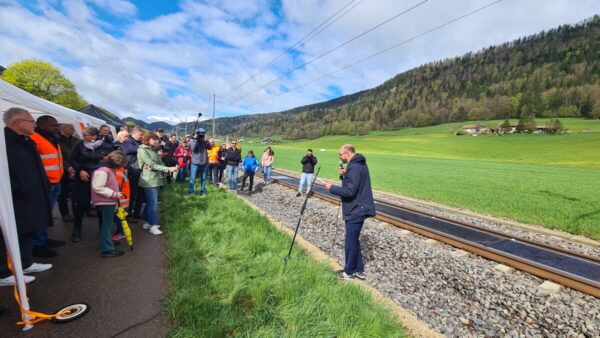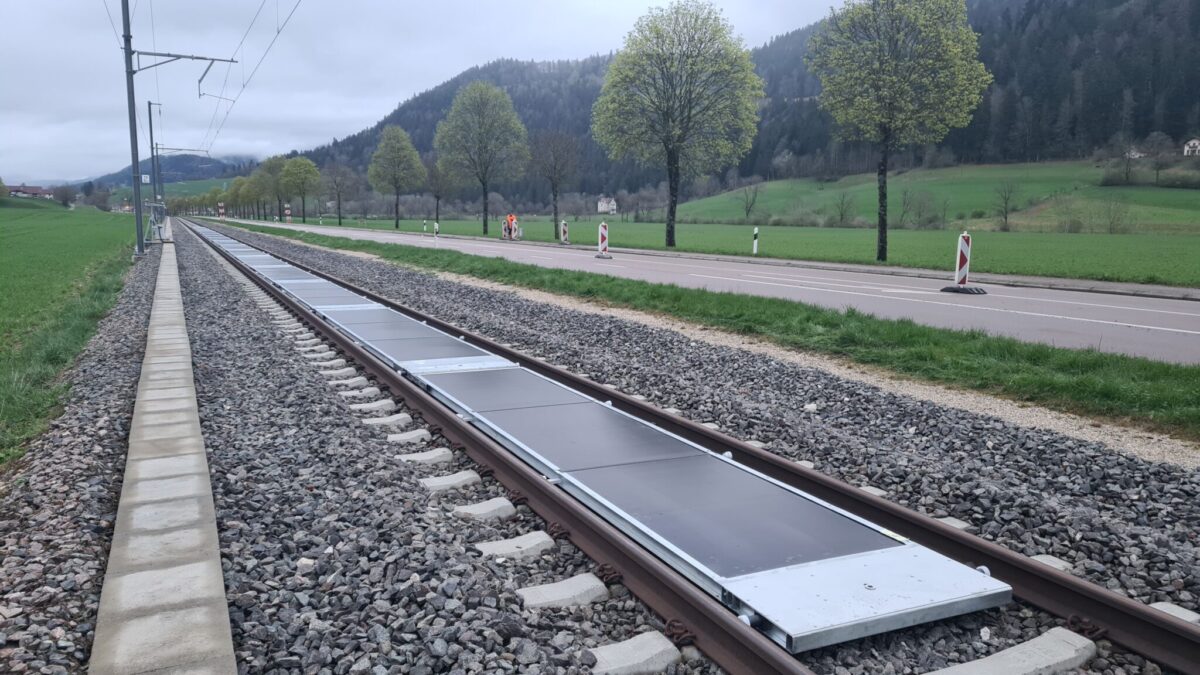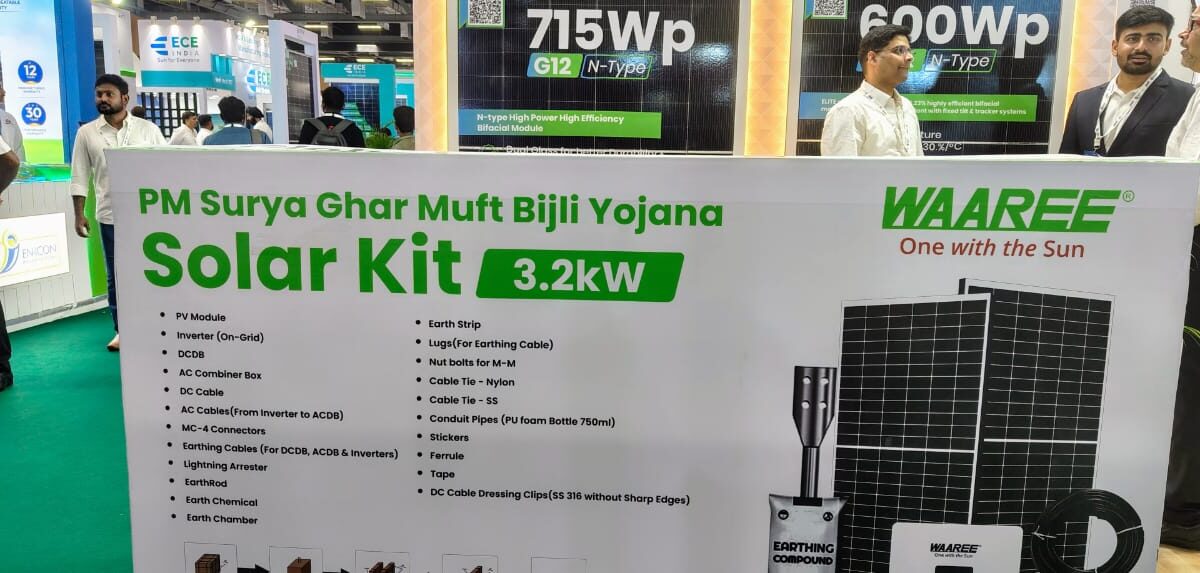Swiss startup Sun-Ways has switched on a removable solar plant installed on a functioning railroad line in western Switzerland.
The array, billed as the world’s first track-mounted solar plant open to rail traffic, sits in the Neuchâtel mountains and includes 48 solar panels rated at 385 W each. The installation has a total output of 18 kW and is expected to generate 16 MWh per year, feeding power into the public grid 500 meters from the site.
Passenger trains are scheduled to begin running over the installation on April 28.
Switzerland’s Federal Office of Transport approved the removable PV plant in October 2024. Since then, it has undergone tests and analyses requested by the agency. It has secured all necessary permits.
Sun-Ways said it will carry out tests over the next three years on panel coating, soiling, and the system’s impact on rail infrastructure. The data will help determine whether rail operations can run safely with a removable solar array mounted between the tracks.
Delegations from Belgium, France, Indonesia, Israel, and South Korea attended the inauguration to assess potential deployment in their home countries, said the company.

An international team recently conducted a technical and economic analysis to determine whether deploying PV systems between or near railway tracks is viable for rural applications. The researchers found that this often-criticized project type may be not only technically feasible but also commercially attractive.
Critics have focused on two key concerns that may limit the performance of solar panels: heavy soiling and strong mechanical stress from trains passing overhead. Both factors could significantly shorten a system’s lifespan and reduce energy output.
The researchers acknowledged these risks and noted that in Bangladesh, for example, rail tracks are typically built on soft alluvial soils, which generally dampen vibration amplitude caused by passing trains.
The researchers presented their findings in the study “Techno-economic study of a photovoltaic power plant besides the railway track for rural uses in Bangladesh,” published in e-Prime – Advances in Electrical Engineering, Electronics and Energy.
This content is protected by copyright and may not be reused. If you want to cooperate with us and would like to reuse some of our content, please contact: editors@pv-magazine.com.








By submitting this form you agree to pv magazine using your data for the purposes of publishing your comment.
Your personal data will only be disclosed or otherwise transmitted to third parties for the purposes of spam filtering or if this is necessary for technical maintenance of the website. Any other transfer to third parties will not take place unless this is justified on the basis of applicable data protection regulations or if pv magazine is legally obliged to do so.
You may revoke this consent at any time with effect for the future, in which case your personal data will be deleted immediately. Otherwise, your data will be deleted if pv magazine has processed your request or the purpose of data storage is fulfilled.
Further information on data privacy can be found in our Data Protection Policy.